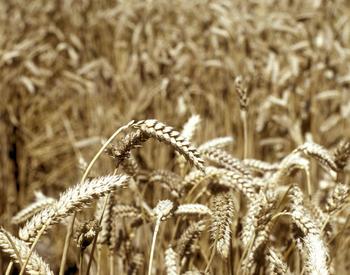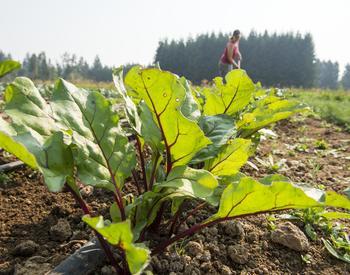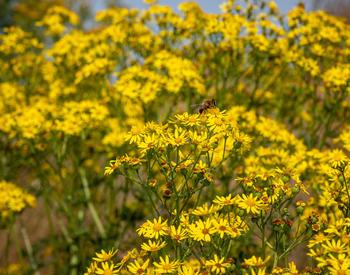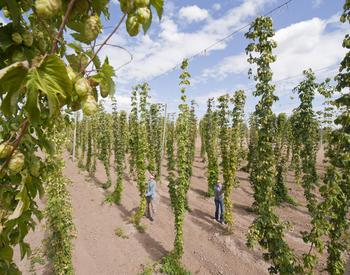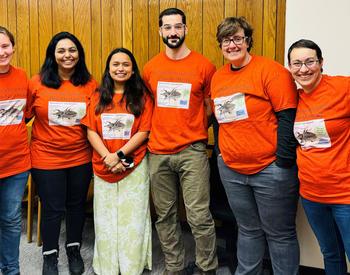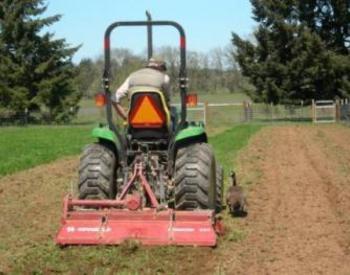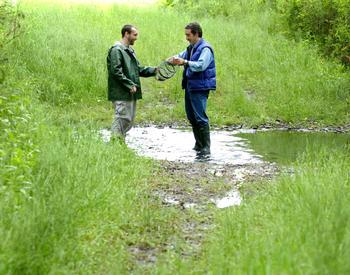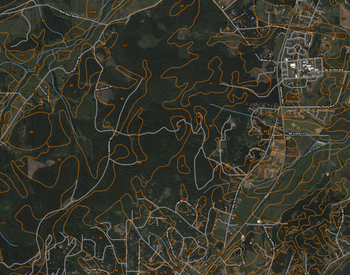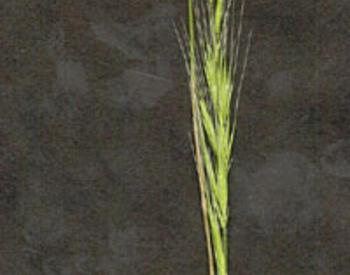This fact sheet is designed to help guide commercial hop growers in selecting cover crops. The guide discusses benefits and disadvantages for four different cover crop strategies: annual fall planted, annual spring planted, annual re-seeding and perennial sod. Cover crop suggestions are tailored to western Oregon climate and regional cropping practices.
Identify your priorities.
All cover crops will benefit the soil and provide organic matter, but some are high biomass producers, some better nutrient scavengers, some better at breaking up compaction or suppressing nematodes, for example. Decide your primary goals. Cover crop mixes may allow you to achieve multiple benefits.
Know your management, constraints and concerns.
What planting dates work for you and your crew? How much row traffic do you have? How susceptible is your variety to downy or powdery mildew? Do you cross cultivate? When do you typically start fungicide and insecticide sprays?
| Desired benefits/characteristics | Fall-planted annual | Spring-planted annual | Annual reseeding | Perennial sod |
|---|---|---|---|---|
| Add organic matter | XXX | XX | XX | XX |
| Scavenge excess nutrients, "catch crop" | XXX | X | XX | XXX |
| Supply Nitrogen, "green manure" | XX(legumes) | X | XX | X |
| Pollinator habitat | X | XX (careful with sprays!) | XX(careful with sprays!) | X |
| Beneficial predator habitat | X | XX | XX | X |
| Winter cover, erosion prevention | XXX | X | XX | XXX |
| Summer cover, dust mitigation | X | XXX | XX | XXX |
| Weed suppression | XX | XX | XX | XX |
| Year-round ground cover | X | X | XX | XXX |
| Fast establishment | XXX | XXX | XX | XX |
| Considerations for hop production | Fall-planted annual | Spring-planted annual | Annual reseeding | Perennial sod |
| High biomass, increase disease pressure | XXX(species dependent) | XX (species dependent) | XX (depends on mow) | XXX(depends on mow) |
| Shade tolerance | - | X | XX | XX |
| Favors voles | X | X | X | XX |
| Withstand high-drive row traffic in spring and summer | - | X | XX | XXX |
| Mowing frequency | - | X | X | XX |
| Suggestions for PNW hops1 | winter cereals, cereal rye, crimson clover, common vetch | teff, German foxtail millet, buckwheat, chickling vetch, phacelia | subterranean or rose clover, annual lupine | turf-type fescues, bentgrass, white clover |
Specific considerations for hops
Pollinator habitat
Attracting pollinators can be a great benefit to our ecosystems and other crops, but if you do this make sure the bloom period is before you begin spraying both fungicides and insecticides or the crop is mowed before spraying. You don't want to end up attracting pollinators and inadvertently spraying them.
Low biomass options
Too much biomass in the rows can be a pain to manage and may decrease air flow and increase disease pressure. A few ideas for lower height or lower biomass options 9crip type, see table above); annual lupine (AS), subterranean clover (AS), hybrid cereal rye, Brasseto var. (FP), oats (FP).
Longevity of the yard
Important to consider when thinking about perennial cover and summer cover options. Work by Sara DelMoror in Yakima Valley found that hard or tall fescue was most economical if the yard would stay in for five-plus years. For less than five years, a fall-planted barley that was mowed as needed in summer was most economical.
Method of establishment
Drill seeding into a prepared seedbed often leads to better establishment and would be worth considering if putting in a long-term perennial cover. Or consider broadcast seeding into a tilled bed for a sod-type establishment. See: Cover crop establishment in western Oregon vegetables.
Current practices and equipment
In western Oregon, fall planting in likely to be most successful for hop producers, particularly for perennial plantings. Fall-seeded crops take advantage of natural precipitation, help prevent soil erosion and scavenge excess nutrients through the winter, and are more established when spring traffic increases. Self-seeding annuals should also be planted in the fall if possible.
Break up soil compaction
Daikon radish, oil seed radish, and cereal rye will help break up compacted soil. A caution with radishes -- a three-mile isolation distance is required because of regional seed production. You must mow/terminate before flowering. A USDA Plant Materials Study found that oil seed radish varieties 'Image Nematode Control Radish' and 'Carwoodi Nematode Control Radish' had higher root length than many daikon tiller radish varieties. See report for details.
Mixes to consider
Planting a mix of two to six species is a good idea. Winter: cereal grain, legume (crimson clover/ common vetch), phacelia. Summer annual: teff, buckwheat, chickling vetch. Perennial: turf types like tall fescue/hard fescue/ bent grass, white clover. Perennial w/annual reseeding; turf type tall fescue, subterranean clover, native annual lupine.
Resources
There are tons of resources on cover crops and selecting successful cover crops online and it can easily get overwhelming. Don't hesitate to call and ask Besty Verhoeven if you have specific questions or to share what you're experimenting with.
- Cover crop variety testing in the Willamette Valley: Annie Young-Matthews, USDA Plant Materials Center, Corvallis. Great resource for comparing specific varieties in local environment.
- Cover crops in hop production in Yakima Valley: Sara DelMoro
- Managing Cover Crops Profitability: USDA-SARE publication, digital version is free.
- Selecting successful pollinator mixes
- Cover crop establishment tips for Oregon vegetable systems: Nick Andrews, OSU Extension
Thank you to Andy Gallagher of Red Hills Soil and Annie Young-Matthews of the USDA Plant Materials Center in Corvallis for their insight and help.
- 1Great information on specific varieties available in USDA Plant Materials reports
